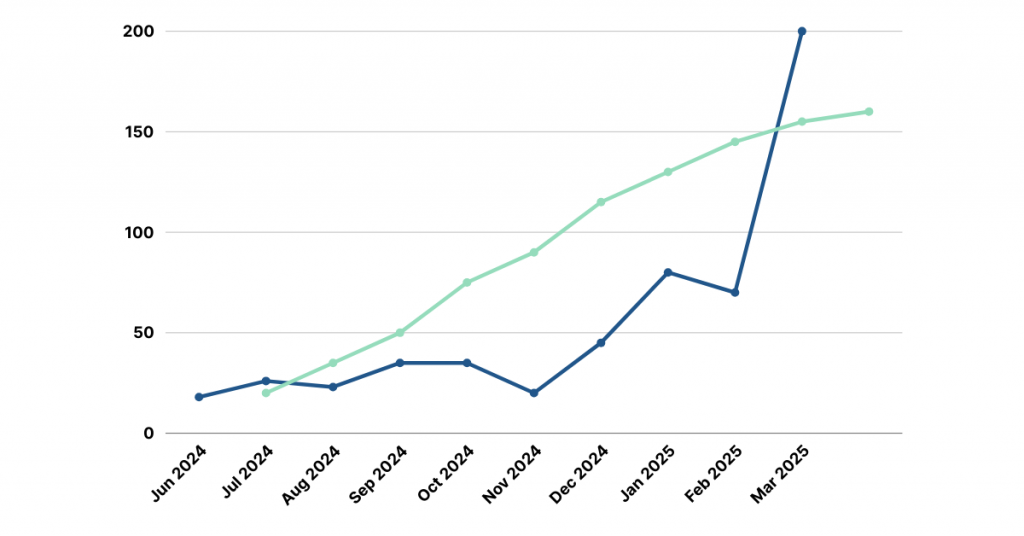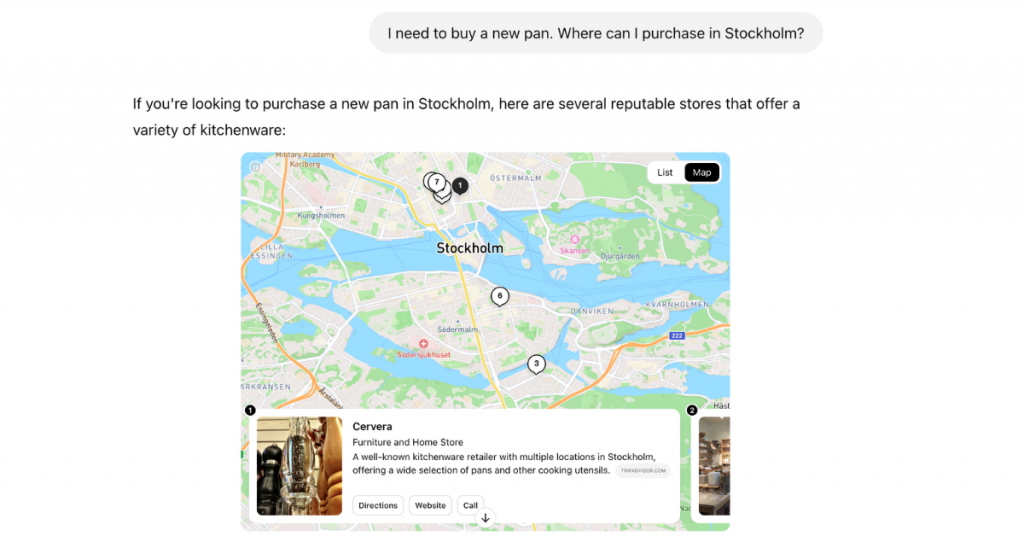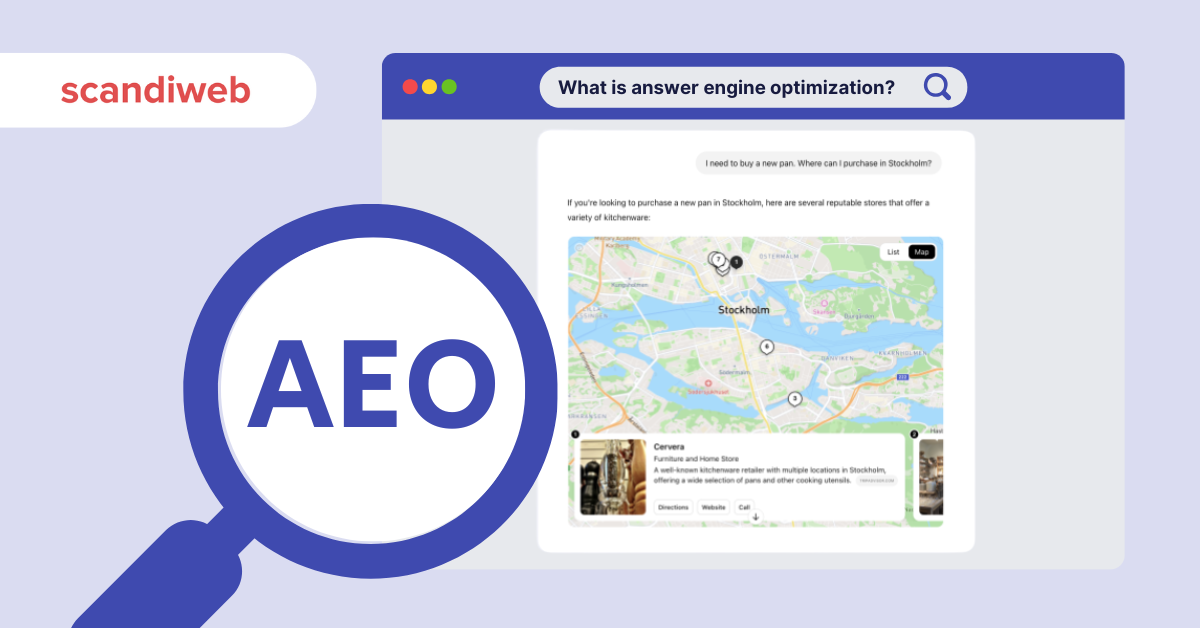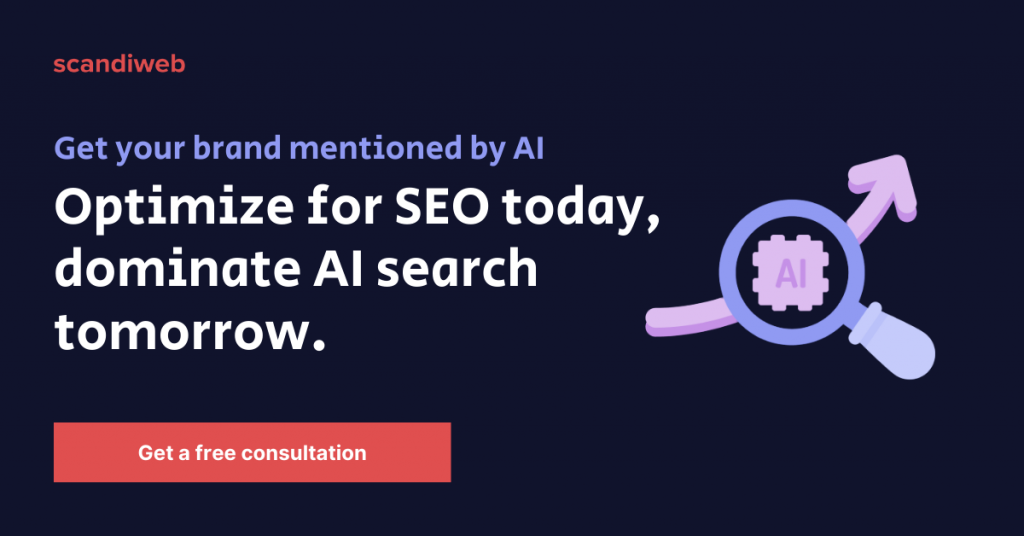The era of traditional search engine dominance is coming to an end.
Gartner predicts that by 2026, traditional search traffic will decline by 25% as users increasingly turn to AI-driven answer engines like ChatGPT and Perplexity. There are over one billion AI-assisted searches daily, and companies that optimize their content for AI answer engines early will gain an advantage, while others risk falling behind.

ChatGPT recently introduced search operators, allowing AI to perform tasks like filling out forms or making purchases. These capabilities transform AI from merely answering questions to actively engaging with web content. Brands now need content structured not just for clarity but also for actionable AI interactions.
With AI becoming more proactive and capable of directly interacting with websites, one critical question emerges: when users ask for recommendations, will AI recommend your products or your competitors?

What is answer engine optimization?
Answer engine optimization (AEO) is the process of optimizing your content to rank within AI-driven conversational platforms. Instead of presenting lists of website links, answer engines respond directly to user questions with concise, structured answers pulled from authoritative sources across the web.
How AEO works
AEO works by making your content easily discoverable and understandable for conversational AI. Structured data markup, clear and direct responses to frequently asked questions, and credible external references help AI models accurately extract and present your content.
Unlike traditional SEO, which emphasizes keywords and backlinks to rank higher in search results, AEO prioritizes natural language clarity, structured information, and credibility to ensure AI consistently chooses your answers.
What AEO means for SEO
How AEO and SEO work together
Although search engine traffic is in decline, it is far from dead. Billions of people still use Google for their search queries. On the other hand, many ask voice assistants like Alexa complete questions, and others consult AI chatbots for advice. Using SEO and AEO together means you’re present wherever your audience searches, and users can get the information needed without leaving your site.

Enhancing schema markup
Adding structured data like product, review, and FAQ schemas improves how search engines and AI platforms interpret your content. This structured data helps accurately categorize your content, enhancing visibility across multiple search and AI channels.
For SEO, schema markup enriches your results, displaying additional details such as ratings, prices, and answers directly in search listings.
For AEO, structured data ensures AI tools can effectively extract key points, increasing your content’s chances of being chosen in conversational responses.
Internal linking & navigation
Clearly structured internal linking through semantic mapping and intuitive navigation boosts your website’s usability and helps engines interpret content relevance and relationships.
For SEO, strategic internal linking boosts your site’s crawlability and distributes page authority efficiently.
For AEO, clear internal links guide AI platforms in finding relevant information quickly, increasing your content’s visibility in AI-generated answers.
Conversational, intent-focused content
Producing conversational, user-focused content aligns your brand naturally with the questions users ask, especially through voice and AI-driven searches.
For SEO, conversational content drives targeted organic traffic by helping your content rank higher for long-tail queries.
For AEO, concise answers optimized for natural language make your content highly relevant for AI-generated snippets, voice results, and zero-click answers.
Backlinks from trustworthy sources
Acquiring backlinks from reputable websites establishes strong domain authority, significantly boosting your visibility in traditional search rankings.
For SEO, backlinks from authoritative domains directly improve your organic rankings by signaling strong trustworthiness and relevance to search engines.
For AEO, credible backlinks enhance your brand’s authority and recognition, increasing the likelihood that AI platforms will reference your content.
AEO and SEO differences
Although SEO and AEO share many common elements, they differ in key aspects. SEO delivers short-term ranking improvements, while AEO builds a sustained presence over time. Additionally, SEO optimizes entire web pages with keyword-driven content, mainly targeting transactional queries. In contrast, AEO prioritizes specific chunks of content optimized for nuanced, conversational, and long-tail queries.
SEO emphasizes indexation, backlinks, and site speed. On the other hand, AEO primarily focuses on structured data and clear formatting. Lastly, backlinks play a crucial role in SEO rankings but are less influential in AEO, where content authority carries greater weight.
SEO broadly addresses general user intents, while AEO specifically anticipates detailed and multi-layered user questions. Furthermore, SEO provides clear, measurable rankings via tools and analytics, while AEO visibility is dynamic and harder to quantify.
4-step process to mastering AEO
Optimizing your content for answer engines involves content structuring, technical optimization, and external credibility. Here’s how to address each aspect to boost your brand’s visibility in AI-generated responses.
Step 1: Your brand in AI results
Start by identifying key topics and questions directly from customer queries. Next, determine who the top-performing competitors are and adjust your approach accordingly. This involves optimizing your content formats—such as FAQs, comparisons, and how-to guides—to align closely with what AI engines favor.
Identifying topics, markets, and languages through search query data unifies your SEO and AEO strategies. Using data from Google or Bing helps you pinpoint high-value questions and conversational queries.
However, answer engines don’t generate answers out of the blue. Instead, they rely on a combination of signals to decide which ones to mention. The graphic below illustrates these signals and how they influence brand visibility in AI results.

Step 2: Make your site AI-ready
Make your site AI-ready with clear headings, structured tables, FAQs, and internal links. Ensure your site loads quickly, works well on mobile devices, includes schema markup, and is easily crawlable by AI engines. Create concise, 40 to 60-word answers tailored specifically for AI snippets, and build dedicated resourceful pages like “Top Questions About [Your Product]” and comparative guides.
Step 3: Boosting visibility beyond your site
Collaborate with influencers, niche blogs, and relevant platforms through guest posts and data sharing to increase your reach. Secure PR partnerships to earn placements in reputable media outlets and distribute unique research and comparative content to get backlinks and citations. Lastly, amplify your content by actively sharing it on platforms such as LinkedIn and Quora.
Step 4: Refining the strategy
Constantly refine your AEO strategy by monitoring key metrics and identifying gaps in AI coverage—topics and questions where your brand isn’t currently appearing in AI-generated answers. Prioritize your best-performing tactics and continually adapt to evolving AI search trends.
Challenges to implementing AEO
Constantly evolving AI technology
One significant challenge is the continuous evolution of conversational AI models. New features and platforms launch frequently—ChatGPT alone introduces updates almost weekly. A strategy effective today may quickly become obsolete tomorrow, and brands need agile processes to swiftly respond to the newest updates.
Lack of transparency in AI ranking
Unlike traditional SEO, the exact factors influencing AI-driven search aren’t transparent. Crafting concise, informative, and conversationally natural answers requires expertise beyond traditional keyword optimization. Brands accustomed to traditional SEO tactics may struggle to write content optimized for AI queries.
Without clear guidelines, companies often resort to trial-and-error, spreading resources across multiple tactics without understanding which ones contribute to visibility. This shotgun approach can result in wasted effort and resources, as it becomes difficult to identify which tactics genuinely impact AI visibility.
Schema markup
Robust schema markup is essential to AEO, but many brands lack comprehensive structured data. Implementing structured data typically requires dedicated technical resources or support from experienced developers. Without these resources, brands struggle to provide AI engines with clear, structured content for accurate recommendations.
Achieving external authority
Securing backlinks and mentions from trusted outlets requires focused PR activities, strategic partnerships, and targeted outreach. Companies that lack the ability and resources to establish these mentions will find it difficult to be visible within AI-generated responses.
Measuring the success of AEO
Monitoring how frequently and positively your brand is mentioned by AI compared to competitors helps you measure your position within the industry. Tracking these mentions allows you to see exactly where you stand—both in the frequency of mentions and sentiment—relative to your competition.
Analyzing your website traffic through tools like Google Analytics helps identify visits originating from AI-generated responses. By tracking referral sources and examining user engagement from these visits, you can measure how well your AEO strategy performs and adjust accordingly.

scandiweb’s approach to AEO
scandiweb’s AEO implementation starts with a holistic audit covering keyword analysis, competitor visibility, and brand sentiment within AI-driven search results. This audit identifies your brand’s position across conversational AI platforms.
Next, scandiweb creates a detailed strategy and action plan tailored to your market opportunities and specific KPIs. Optimization prioritizes low-hanging fruits, such as enhancing existing pages with structured content, improved layouts, and relevant schema markup to increase immediate visibility.
After initial optimizations, scandiweb’s monthly program focuses on sustained growth. This includes building credibility by securing backlinks from authoritative sources and producing conversational, AI-optimized content aligned with market trends and user intent.
Also read:
- Traffic & Conversion Increase for B2C, D2C, and B2B Brands in the Electronics Industry
- Digital Marketing and Traffic Acquisition Strategy in Apparel & Fashion
- SEO Strategy for Beauty Brands: Reaching the Top Shelf in Search Engines
Final thoughts
Answer engine optimization represents a strategic shift in digital marketing. With AI increasingly guiding consumer interactions, brands must proactively optimize content for conversational AI platforms to maintain visibility and drive consistent referral traffic. Successfully navigating AEO requires adaptability and consistent optimization guided by AI-specific metrics.
Ready to lead in AI search? Contact us for a tailored AEO services built to meet your business goals.



Share on: